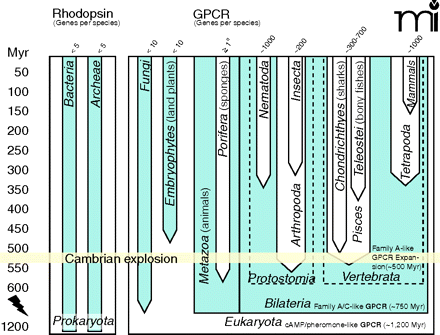
- Institution: Stanford Univ Med Ctr Lane Med Lib/Periodical Dept/Rm L109
- Sign In as Member / Individual
G Protein-Coupled Time Travel: Evolutionary Aspects of GPCR Research

Representation of GPCRs in major evolutionary lineages. Heptahelical transmembrane-spanning proteins of the proteo-, halo-, and bacteriorhodopsin families are present in prokaryotes. Except for their transmembrane architecture, there is no evidence of an evolutionary relation between the genuine GPCRs and bacteriorhodopsins, which are not coupled to G proteins. GPCRs and their signal transduction probably evolved ~1.2 billion years ago. Genomes of extant plants and fungi usually contain less than 10 GPCR genes. The first rhodopsin-like GPCRs, which compose the main GPCR family in vertebrates, appeared ~580–800 million years (Myr) ago. Expansion of rhodopsin-like GPCRs started ~500 Myr ago, giving rise to over 1000 members in mammalian genomes. The relationships of the major lineages, which remain controversial, are not indicated.
a Complete genome data are not yet available.


